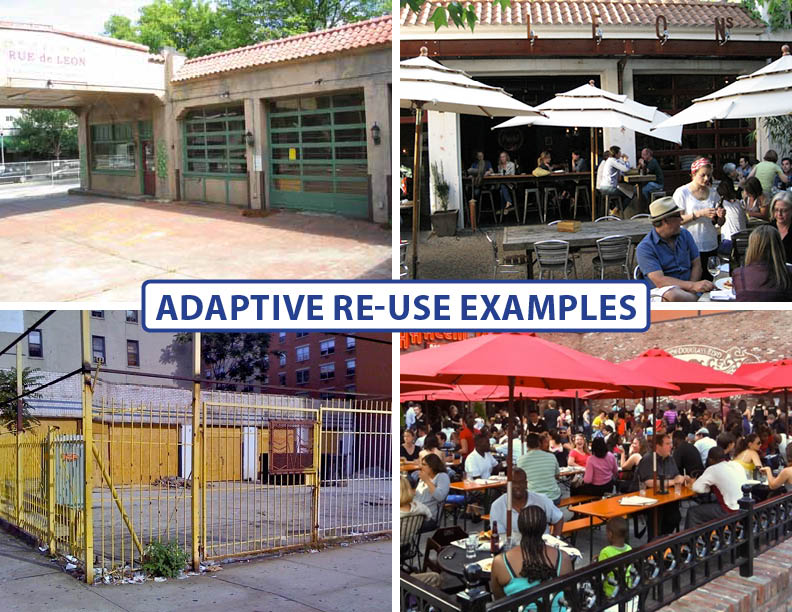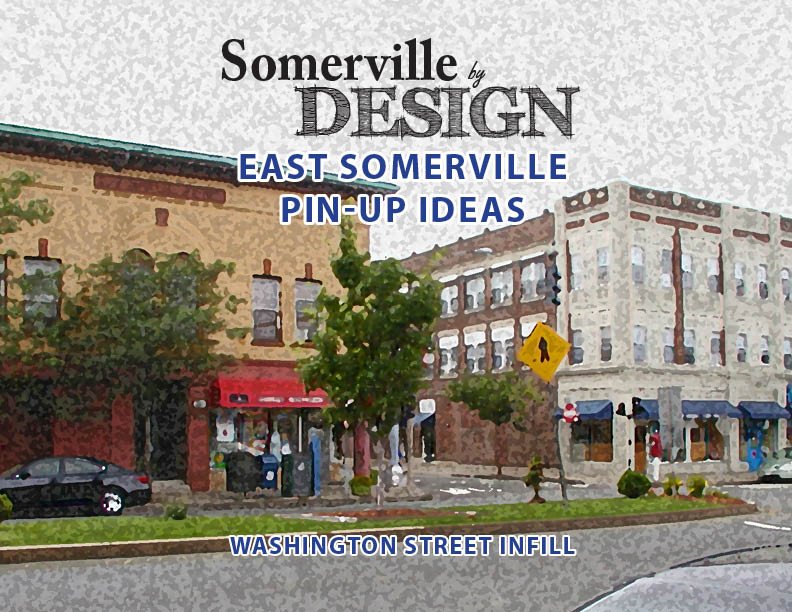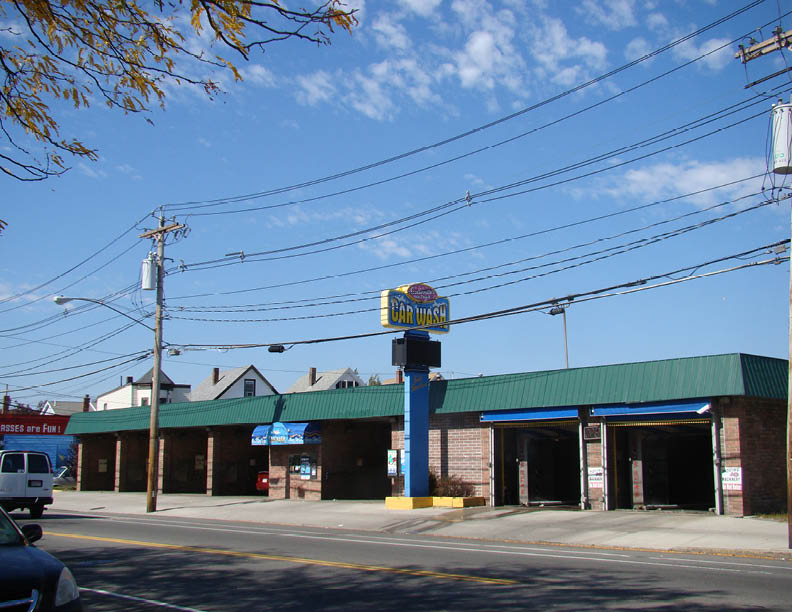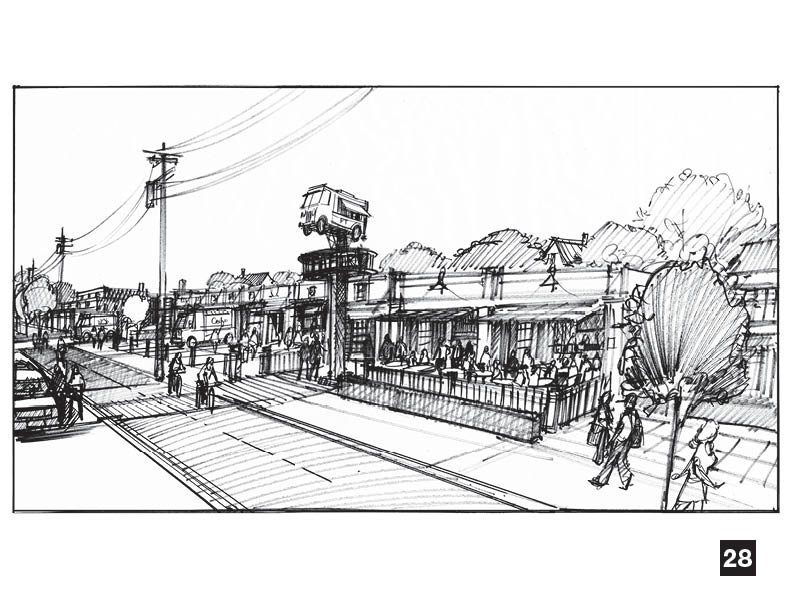This is the eleventh of multiple posts covering all of the ideas generated at the Somerville by Design: East Somerville Design Charrette that was held September 30 – October 2, 2013. We have numbered all of the images so that it is easier to reference them when providing feedback.
Feedback should be provided using the comments section below to facilitate discussion among the entire community of East Somerville for each idea presented. For any further questions, please contact the Mayor’s Office of Strategic Planning and Community Development at 617-625-6600.
It’s wrong to think of every property along Broadway or Washington Street as a redevelopment site. Jane Jacobs famously brought this fact to the forefront in her 1961 book “The Death and Life of Great American Cities” where she said:
Cities need old buildings so badly it is probably impossible for vigorous streets and districts to grow without them. By old buildings I mean not museum-piece old buildings, not old buildings in an excellent and expensive state of rehabilitation–although these make fine ingredients–but also a good lot of plain, ordinary, low-value old buildings, including some rundown old buildings.
If a city area has only new buildings, the enterprises that can exist there are automatically limited to those that can support the high costs of new construction. …And for this reason, enterprises that support the cost of new construction must be capable of paying a relatively high overhead–high in comparison to that necessarily required by old buildings.
Chain stores, chain restaurants and banks go into new construction.
But neighborhood bars, foreign restaurants… these go into old buildings. Perhaps more significant, hundreds of ordinary enterprises, necessary to the safety and public life of streets and neighborhoods, and appreciated for their convenience and personal quality, can make out successfully in old buildings, but are inexorably slain by the high overhead of new construction.
As for really new ideas of any kind–no matter how ultimately profitable or otherwise successful some of them might prove to be–there is no leeway for such chancy trial, error and experimentation in the high-overhead economy of new construction.
Old ideas can sometimes use new buildings. New ideas must use old buildings.
For this important reason – cultivating new business, small business, locally owned business, and creative start-ups – it is important to retain some existing, older buildings. Some of these will be ugly buildings, but these are the buildings where a little bit of investment can go a long way to getting something off the ground that is unique. This is the world of adaptive re-use.

CONCEPT 28
To illustrate the possibilities around adaptive re-use, the design team for East Somerville used the Car Wash along Washington Street as an example. Concept 28 illustrates a “Food Truck Depot” as just one imaginative possibility for the reuse of what many might think of as building that would only ever be a car wash. By removing the car wash infrastructure from inside each “garage” and installing patio fencing, movable tables and chairs, and an assortment of lighting, the former car wash could play host to seven different food trucks creating an outdoor cafeteria like atmosphere that invites a vibrant level of activity during the warmer months. Although this example may never come about, it provides inspiration to property owners and creative interests in East Somerville on the hidden potential of old buildings to be utilized in new and exciting ways.
Be sure to check out all of the East Somerville idea posts:
http://www.somervillebydesign.com/es-pinup-1/
http://www.somervillebydesign.com/es-pinup-2/
http://www.somervillebydesign.com/es-pinup-3/
http://www.somervillebydesign.com/es-pinup-4/
http://www.somervillebydesign.com/es-pinup-5/
http://www.somervillebydesign.com/es-pinup-6/
http://www.somervillebydesign.com/es-pinup-7/
http://www.somervillebydesign.com/es-pinup-8/
http://www.somervillebydesign.com/es-pinup-9/



